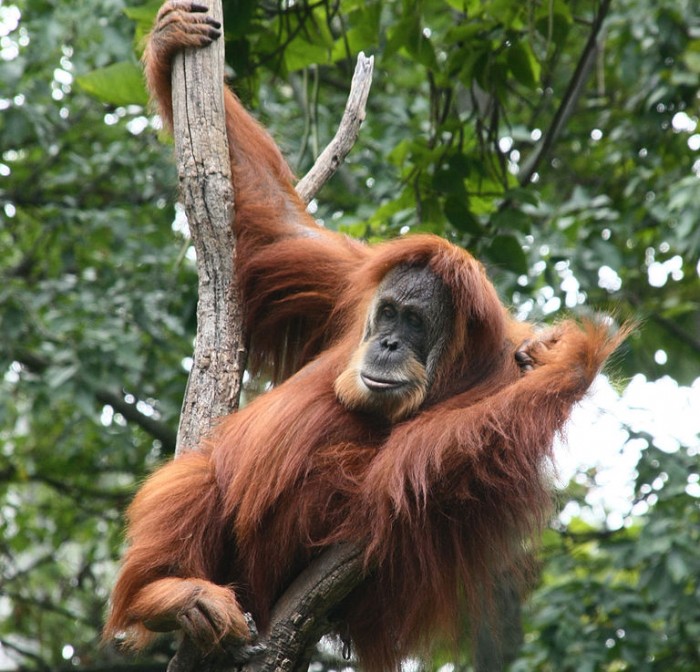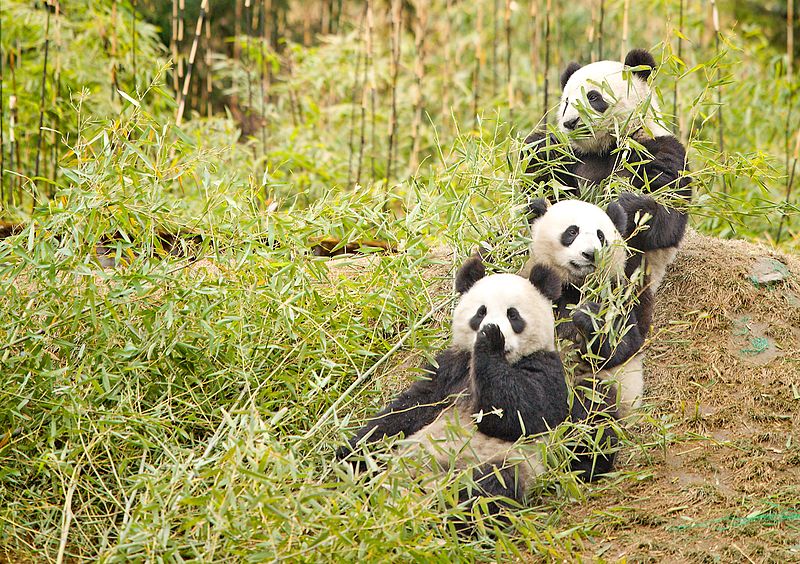Further Updates to the Red List
Further updates to the IUCN Red List of Threatened Species was released during the IUCN World Conservation Congress earlier this month.
 Image: Greg Hume (Own work) - CC BY-SA 3.0
Image: Greg Hume (Own work) - CC BY-SA 3.0 This update brought well-publicised good news for the Giant Panda, which was previously listed as Endangered but is now listed only as Vulnerable. Its population has grown due to forest protection and reforestation, confirming the effectiveness of the Chinese government’s efforts to conserve the species.
Other conservation successes include the Tibetan Antelope, which has moved from Endangered to Near Threatened. Its population underwent a severe decline from around one million to an estimated 65,000 to 72,500 in the 1980s and early 1990s. This was the result of commercial poaching for their valuable underfur, called shahtoosh, which is used to make shawls. Rigorous protection has been enforced since then, and the population is currently between 100,000 and 150,000 animals.
Another species with an improved status is the Greater Sticknest Rat, which has moved from Vulnerable to Near Threatened. Endemic to Australia, a successful species recovery plan has allowed reintroductions and introductions to predator-free areas. Also in Australia is the Bridled Nailtail Wallaby, whose population dramatically declined during the 19th and early 20th centuries due to the impacts of invasive species and habitat loss. A successful translocation programme established new populations within protected areas and led to its status being improved, from Endangered to Vulnerable.
Yet with good news inevitably comes bad. The Eastern Gorilla, the largest living primate, has now been listed as Critically Endangered due to illegal hunting. It has suffered from a devastating population decline of more than 70% in 20 years, and its population is thought to number fewer than 5,000 individuals. This means that four out of the six great apes (the Eastern Gorilla, the Western Gorilla, the Sumatran Orangutan and the Bornean Orangutan) are now Critically Endangered, and only one step away from going extinct. The remaining two – the Chimpanzee and the Bonobo – are not that far away either.
“To see the Eastern gorilla – one of our closest cousins – slide towards extinction is truly distressing,” says Inger Andersen, IUCN Director General. “We live in a time of tremendous change and each IUCN Red List update makes us realise just how quickly the global extinction crisis is escalating. Conservation action does work and we have increasing evidence of it. It is our responsibility to enhance our efforts to turn the tide and protect the future of our planet.”
The once widespread and abundant Plains Zebra has moved from Least Concern to Near Threatened. Their population has reduced by 24% in the past 14 years from around 660,000 to a current estimate of just over 500,000 animals. They are threatened by hunting for bushmeat and skins. In many countries they are found only in protected areas, but population reductions have been recorded in 10 out of 17 range states since 1992.
Three African antelopes have also moved from Least Concern to Near Threatened – the Bay Duiker, the White-bellied Duiker and the Yellow-backed Duiker. Populations are relatively stable in protected areas, but outside these areas they are decreasing due to illegal hunting and habitat loss.
“Illegal hunting and habitat loss are still major threats driving many mammal species towards extinction,” said Carlo Rondinini, Coordinator of the mammal assessment at Sapienza University of Rome “We have now reassessed nearly half of all mammals. While there are some successes to celebrate, this new data must act as a beacon to guide the conservation of those species which continue to be under threat.”
Invasive species such as pigs, goats, rats, slugs, and non-native plants are destroying the native flora in Hawaii. The latest results show that of the 415 endemic Hawaiian plant species assessed so far for the Red List (out of around 1,093 endemic plant species), 87% are threatened with extinction, including the Endangered ‘Ohe kiko’ola, a beautiful flowering tree found only on the island of Kauai. Thirty eight have been listed as Extinct, including the shrubs ‘Oha Wai and Hibiscadelphus woodii. Four species have been listed as Extinct in the Wild including the Haha, last seen in the wild in 2003. Invasive species are the main threat to all of these species, with many being threatened by more than one invasive species. The IUCN Species Survival Commission (SSC) Hawaiian Plant Specialist Group anticipates the remaining species to be assessed will also be highly threatened.
“Hawaii is an example of nature at its best with spectacular examples of evolution, yet it is facing an uncertain future due to the impact of invasive species — showing how unwittingly, human actions can make nature turn against itself,” says Matt Keir, a member of the IUCN SSC Hawaiian Plant Specialist Group. “What we see happening in Hawaii is foretelling what will happen in other island or contained ecological systems. Hawaii and other nations must take urgent action to stop the spread of invasive species and to protect species with small population sizes.”
The Critically Endangered flowering Haha plant is one of the 105 extremely rare Hawaiian plant species on the Red List with less than 50 mature individuals. Alula has moved from Critically Endangered to Critically Endangered (Possibly Extinct in the Wild), and is one of 38 Red Listed species with less than five individuals remaining. The Alula has been so impacted by invasive species and landslides, that only one plant remained in the wild in 2014 and it has not been seen since.
This new data will be used to influence action such as listing species on the US Endangered Species Act which will assist in securing funding for conservation programs to target and control invasive species, and to fence wild areas to protect them from large mammals. Improved biosecurity to stop invasive species entering the country is essential, according to IUCN experts.




No comments yet.